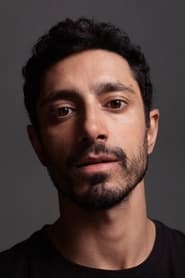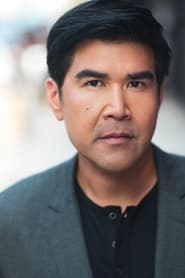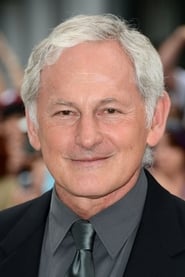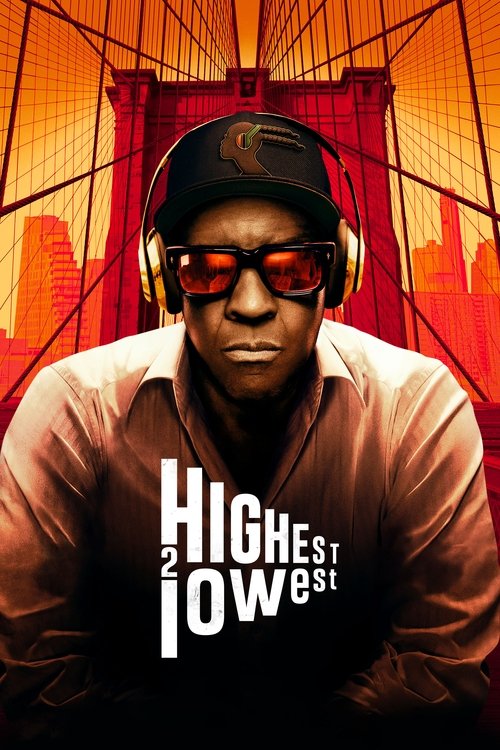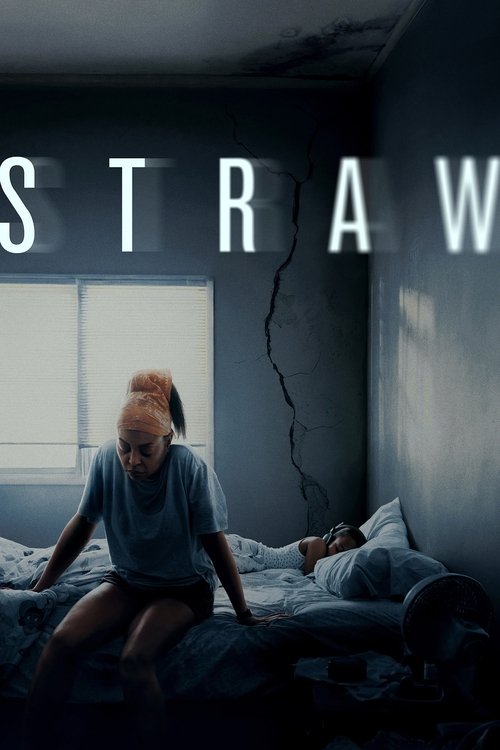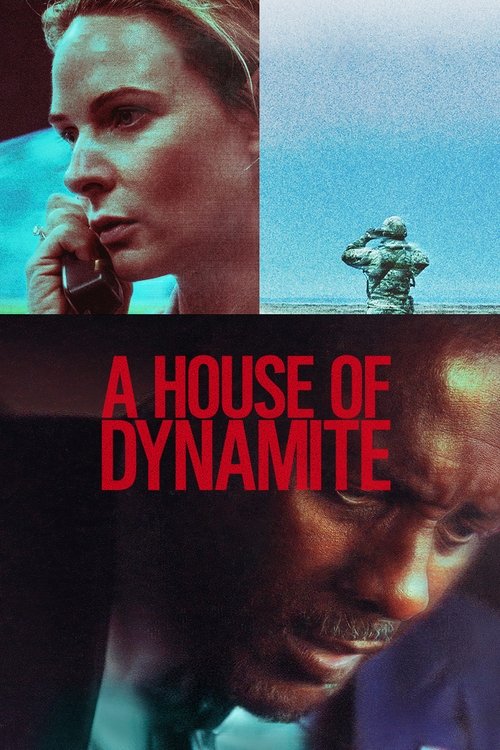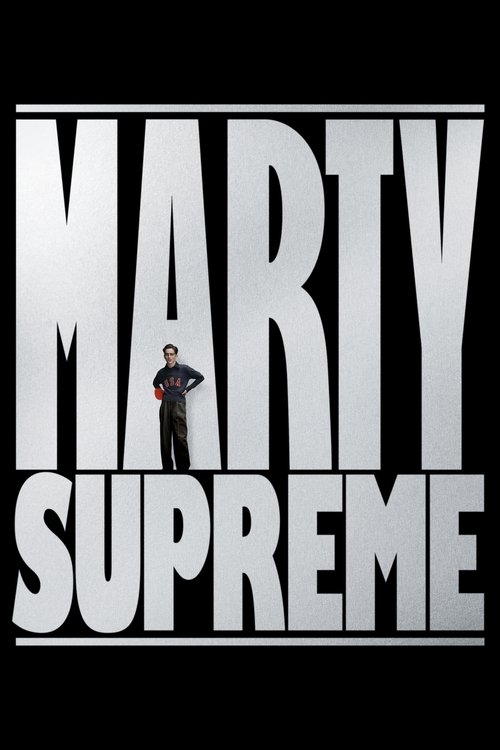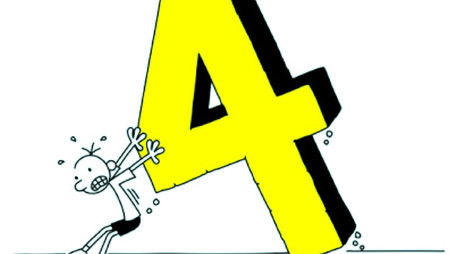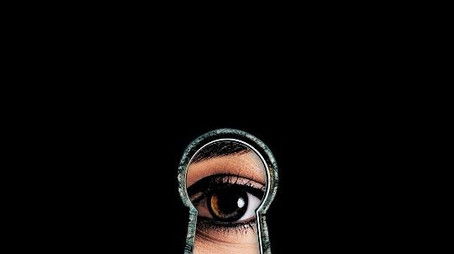
Ask Your Own Question
What is the plot?
The film opens in New York City with Ash operating in the shadows as a fixer who brokers confidential transactions between whistleblowers and the corrupt corporations they accuse. He arranges a payoff for a man named Hoffman, forcing him into a face-to-face meeting with McVie, the chief executive of Ash's former employer, Optimo. Hoffman has already been browbeaten by McVie's thuggish enforcers and, afraid to make his allegations public, hands the incriminating documents over to McVie at the meeting. Before leaving, Hoffman warns that an anonymous intermediary--Ash--holds a copy as an insurance policy. Ash, disguised and watching nearby, sees Hoffman safely onto a train out of the city and later places his duplicate of the file into his secure archive at a warehouse in Newark.
Shortly thereafter Sarah Grant, a scientist who intends to go public with proof that Cybo Sementis Research Institutes' genetically engineered wheat causes harmful side effects, meets with a lawyer and is directed to Ash. Ash preserves his anonymity by communicating only through a telecommunications device for the deaf, routing his messages through the Tri-State Relay Service so he never speaks directly. Sarah, increasingly frightened by the company's campaign of intimidation, approaches Ash wanting to return the report while avoiding retaliation. A professional counterintelligence unit is already tailing her. Dawson leads that team, with Rosetti, Ryan, and Lee as operatives. The men trace the relay call back to the Tri-State service but find themselves blocked by law: the relay keeps no logs, and they cannot legally obtain records that would identify Ash.
Ash agrees to arrange the transfer while keeping leverage against the corporation. He gives Sarah burner phones, precise instructions, and a passcode she must use during phone contact with him. Traveling under the assumption she is eluding corporate pressure, Sarah flies to Pittsburgh. She is actually shadowed by Dawson's team, and an undercover Ash follows to counter-surveil the tail. In Pittsburgh Sarah goes to a post office and mails two packages. One is a decoy destined for Oklahoma; its purpose is to send Dawson and his operatives in the wrong direction. The second parcel contains the report and a cash deposit. Ash arranges the second package to be forwarded to a mailbox that he controls, effectively slipping the real report past Dawson and into his custody.
Having the report in hand, Ash leverages it against Optimo and threatens to notify law enforcement and the press, a move that would jeopardize the company's pending billion-dollar merger. Dawson negotiates a truce: his team will cease harassing Sarah in exchange for a half-million-dollar payment, which his unit sends to Ash in the mail. Unknown to Ash at the time, Dawson has hidden a tracking device inside the mailed envelope before dispatching the money. Ash, a recovering alcoholic who keeps a low profile by posing as a bicycle messenger named Tom, attends Alcoholics Anonymous meetings where his sponsor Wash serves as his confidant. Wash is also an NYPD detective, and Ash shares parts of his life with him while maintaining his secret dealings.
To shield Sarah permanently, Ash enlists a deaf forger who communicates with him through sign language; that forger fabricates a fresh identity for Sarah. Meanwhile, Hoffman's check-in voicemails to Ash reveal a growing remorse: Hoffman confesses that, by accepting McVie's intimidation and surrendering the original evidence, he allowed Optimo to escape accountability and risked lives in the process. When Sarah misses their scheduled nightly check-in, Ash phones as if he were the relay operator and tells her that he has handled clients whose plans have gone wrong before. He forwards the cash payment across the country shortly after receiving it, a maneuver intended to drain the tracking device's battery so Dawson can no longer monitor the funds' movements.
With the merger days away, Ash receives word that Sarah has not completed every step of the handoff. He organizes a dead drop to collect the papers she neglected to send and narrowly avoids Dawson's men while staging the exchange. During an AA meeting following a last call from Hoffman, Ash tells Wash that his descent into alcoholism began after 9/11 and after his own discovery of corporate malfeasance; he admits to being tormented by the knowledge that he sometimes accepts money to keep secrets rather than exposing wrongdoing.
Sarah does not appear for the planned handoff. Ash discovers that Dawson's team has tricked her by convincing her through a facial-recognition ruse that his true identity is James Keaton, a name he does not use. Believing that naming him publicly will protect him, Sarah elects to carry out the exchange herself at a symphony performance. Ash races to the concert hall when he learns of Sarah's plan. Inside the venue he pulls the fire alarm, creating confusion; amid the evacuation he intercepts Sarah and extracts her from Dawson and his operatives who are waiting in the lobby. He tells her his real name and escorts her to a train platform, where she boards a northbound departure. The temporary reprieve collapses minutes later when Dawson phones: he has Sarah in custody and demands the documents Ash is holding.
Ash staggers toward the edge of relapse. He enters a bar, nearly succumbs to drinking, and places an urgent call to Wash. He decides to surrender to the men pursuing him in order to avoid bloodshed. He walks into a surveillance van wearing handcuffs and sits between Dawson and his team while Sarah, whom Dawson has brought along, is held at gunpoint. Dawson forces Ash to lead them to the Newark warehouse where the copies of sensitive material are stored. As the van moves, tension rises; Ash seizes a chance and throws Lee from the vehicle as it travels along a city street. Lee tumbles out onto the pavement, and Ash immediately engages Dawson physically. The two men fight inside the van, trading blows and grappling for control while traffic barrels past.
The conflict inside the van takes a startling turn when Sarah, who has been under Dawson's control, wrestles Dawson into submission and reveals her true role. She peels off a disguise and discloses that she is the operative in charge of the surveillance team and that she was sent by Optimo to retrieve Hoffman's documents. Her confession reframes everything: Dawson and his men were not acting to protect a whistleblower but to recover the material for the corporation. Their actual target, from the beginning, was not Sarah but Ash, whose stash of copies gave Optimo leverage it sought to recapture. In that moment of exposed loyalties, Ash fights his way free and bolts toward the warehouse with a gun he has taken during the scuffle.
Inside the Newark facility Ash triggers a failsafe deliberately set up to distract the searchers: alarms and other measures draw the team's attention while he moves among crates to escape and to get control of the documents. With the operatives focused on the false emergency, Ash picks off a path and runs out into the street. As he flees across the road he is struck by a car. The impact knocks him to the pavement, but he survives; he staggers to his feet, limps away from the wreck, and continues to evade the others who are disoriented by the warehouse alarm. Sarah confronts him on the sidewalk immediately afterward. The interchange between them is tense and immediate: she has just revealed herself as the architect of the counterintelligence operation, and Ash faces the person who manipulated him and his clients.
Ash uses a contingency he has prepared. He calls Wash, and Wash arrives on the scene in his capacity as NYPD detective with a squad of uniformed officers. Police step in and place Sarah under arrest along with Dawson and Ryan, while Rosetti slips away in the confusion and escapes before they can take him into custody. Ash hands the documents to Wash rather than releasing them into the public or to the media; he chooses the detective he trusts to handle the material appropriately. The arrests are formal: Sarah, Dawson, and Ryan are led away in custody and charged with their roles in the scheme to recover Hoffman's evidence for Optimo.
There are no on-screen deaths among the principal characters during the confrontation or its aftermath. Lee--the operative Ash throws from the vehicle--is incapacitated by his fall, and Rosetti manages to flee; none of the main players die in the final sequence.
In the days that follow Ash closes out another set of loose ends. He places most of the half-million-dollar payoff into an envelope and mails the bulk of it to the Tri-State Relay Service, returning the money to the organization that enabled his anonymity. As the film nears its final moments Ash boards a train. While he takes his seat and the platform slides away behind him, radio and television reports begin to scroll and announce the revelations about Optimo's misconduct. News coverage details the company's wrongdoing and the consequences of its failed merger. Ash watches the city recede and the headlines reach the open carriage, and the story ends with him heading down the line as the public learns what the files he safeguarded have proved.
What is the ending?
The ending of Relay (2025) shows Ash alerting his friend Wash and the police, who arrive to arrest Sarah and Dawson's group. Ash survives the ordeal and offers to help Wash, the only other ally he trusts, as the film closes on this note of cautious survival and justice served to the corrupt parties.
In the final sequence of Relay, the tension reaches its peak with a series of carefully orchestrated moves and betrayals. Ash, the secretive fixer who operates through a relay service to protect whistleblowers, has been working with Sarah, a supposed whistleblower targeted by a corporate surveillance team led by Dawson.
The climax begins as Ash realizes Sarah is not the ally he thought she was. She is revealed to be a corporate plant hired by Optimo Pharmaceutical to expose Ash and retrieve incriminating documents. This betrayal shatters Ash's carefully maintained system of anonymity and trust, especially since he had begun to form a genuine, though manipulative, bond with Sarah.
Sarah arranges a final handoff of documents, ostensibly to protect Ash from Dawson's team, but it is actually a trap. Ash, understanding her deception, rushes to a concert hall where the handoff is to occur. The scene unfolds with Ash navigating through the crowd, sounding a fire alarm to create chaos, and attempting to save Sarah from Dawson's group. Despite the danger, Ash reveals his real name to Sarah, breaking his usual anonymity in a moment of vulnerability.
As the confrontation escalates, Ash contacts Wash, a trusted ally and New Jersey detective who has been a mentor figure. Wash and the police arrive just in time to arrest Sarah and Dawson's team, ending the immediate threat. Ash survives the ordeal, and the film closes with him offering to assist Wash, signaling a tentative hope for justice and survival in a bleak world where corruption often prevails.
The fates of the main characters at the end are:
- Ash: Survives the confrontation, maintains his role as a fixer but with a renewed sense of caution and connection through Wash.
- Sarah: Arrested along with Dawson's group, exposed as a corporate plant rather than a true whistleblower.
- Dawson and his team: Arrested by the police, their campaign of intimidation and surveillance thwarted.
- Wash: Emerges as Ash's ally and a symbol of law enforcement's intervention in the corrupt corporate world.
This ending emphasizes themes of betrayal, survival, and the fragile nature of justice in a world dominated by corporate power and surveillance. The characters' fates reflect the film's bleak but realistic portrayal of whistleblowing and the costs of fighting systemic corruption.
Who dies?
In the 2025 film Relay, no characters are explicitly described as dying. The plot centers on Ash, a fixer who helps whistleblowers like Sarah evade corporate harassment while maintaining anonymity through a relay service. The story involves tense cat-and-mouse chases, threats, and blackmail, but none of the sources mention any character deaths or fatal outcomes. Instead, the narrative focuses on survival, evasion, and the moral complexities of whistleblowing in a hostile corporate environment.
Key points supporting this:
- Sarah, the whistleblower, is pursued and threatened but manages to evade capture with Ash's help.
- Ash narrowly escapes confrontations with the corporate team led by Dawson but survives.
- The film's tone is bleak and emphasizes survival and outsmarting powerful adversaries rather than physical violence or death.
- The final confrontations involve gunfights and kidnappings but do not result in confirmed deaths on screen or in plot summaries.
Therefore, no deaths of main or supporting characters are documented in the available detailed plot descriptions or reviews of Relay (2025).
Is there a post-credit scene?
The movie Relay (2025) does not have a post-credit scene. Multiple sources confirm that there are no extras or scenes after the credits in this film.
The film ends without any additional footage or hints at sequels during or after the credits. The story concludes with the main narrative, focusing on Ash's work as a fixer protecting whistleblowers, and there is no post-credit material to extend or add to the plot.
What is the significance of Ash's use of the relay service in maintaining his anonymity and how does it affect his interactions with whistleblowers and corporations?
Ash uses a telecommunications relay service designed for the deaf to communicate anonymously, which allows him to act as an intermediary between whistleblowers and corrupt companies without revealing his identity. This method prevents call records or logs from being traced, making it legally difficult for corporate counterintelligence teams to track him. The relay service is central to his role as a fixer, enabling secure, low-tech communication that protects both his clients and himself while facilitating the exchange of sensitive information and payoffs.
How does Ash's relationship with Sarah Grant evolve throughout the film, and what impact does it have on his usual professional detachment?
Ash, typically neutral and detached in his work, begins to develop a personal connection with Sarah Grant, a whistleblower targeted by her former employer. This bond leads him to break his own rules and push his boundaries to protect her, moving beyond his usual role as a dispassionate broker. His growing concern for Sarah's safety influences his decisions and actions, making the operation more personal and risky for him.
What tactics does Ash use to outsmart the surveillance team led by Dawson and protect Sarah's incriminating documents?
Ash employs clever counter-surveillance techniques, including disguising himself and leading the surveillance team on wild goose chases. He orchestrates the mailing of two packages by Sarah--one as a decoy sent to Oklahoma and the other containing the actual report and cash deposit, which is forwarded to Ash undetected. These maneuvers exploit obscure systems like the US Postal Service and rely on precise coordination through the relay service to maintain leverage and ensure the safety of the whistleblower and the sensitive information.
What role do the Relay office operators play in the coordination of the whistleblower exchanges, and how does this affect the tension and pacing of the film?
The Relay office operators act as air traffic controllers, managing the movements and communications of all parties involved in the exchanges. They provide detailed instructions that must be strictly followed for the operation's success. Their presence adds a layer of tension and rhythm to the film, especially in scenes where Ash types messages that are read aloud by the operators, creating a unique, suspenseful communication dynamic that heightens the stakes and pacing.
How does the film portray the moral ambiguity of Ash's work as a fixer, and what does this reveal about the broader world of whistleblowing depicted in the story?
Ash's work is portrayed as morally ambiguous, essentially involving blackmail and extortion rather than noble whistleblowing. The film presents a bleak world where whistleblowers are in retreat, seeking deals to gain freedom rather than justice. Ash brokers payoffs that protect clients from corporate retaliation but do not aim to stop corruption. This depiction reveals a cynical environment where survival depends on outsmarting powerful institutions through secrecy and leverage, highlighting the erosion of trust and human connection in the fight against corporate wrongdoing.
Is this family friendly?
The movie Relay (2025) is not family friendly and is rated R primarily for strong language. It contains about 19-20 uses of the "f-word" and other intense profanity, which is the main reason for its restricted rating. There is no sexual content or nudity in the film.
Potentially objectionable or upsetting aspects for children or sensitive viewers include:
- Strong and frequent profanity, including intense use of the "f-word" and other harsh language.
- Mild violence, such as a man being stabbed in the leg, a car being set on fire, a gunfight, and chase scenes.
- Ominous and threatening atmosphere with tense, suspenseful moments.
- Themes involving corporate corruption, deceit, betrayal, and witness protection, which may be complex or unsettling.
- Some mild alcohol references (attendance at AA meetings) but no drug use or smoking shown.
Overall, the film is a tense, twisty thriller with mature themes and language, making it suitable only for older teens and adults, not for children or sensitive viewers.



